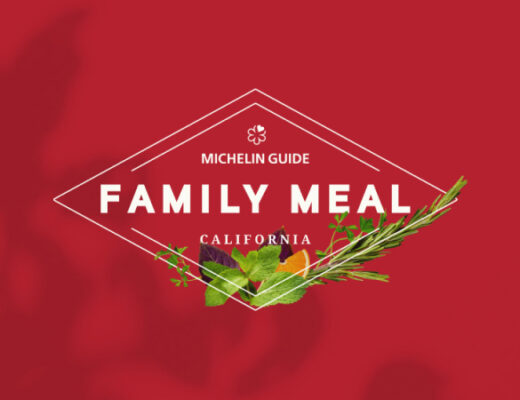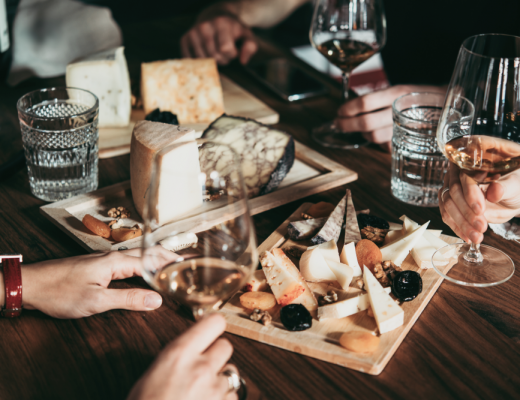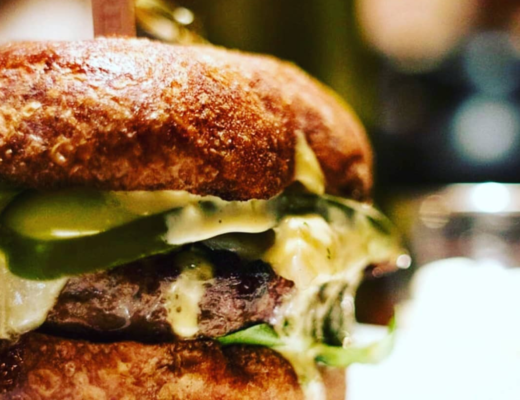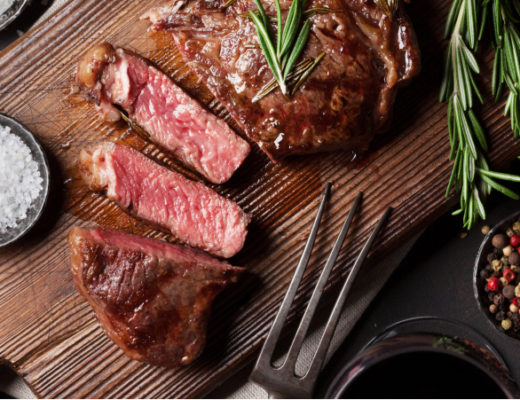Saké is in the midst of a global renaissance and is being produced around the world in a wide range of styles and price-points from cheap and cheerful to pricey and complex. It is by no means a simple beverage, and it may come as a surprise that most saké is meant to be served chilled—particularly premium sakés, which can reveal as much complexity and layered aromas and flavors as some of the greatest white wines in the world.
Just four ingredients are used for saké production: premium saké rice, water, koji (a mold that breaks down carbohydrates into sugars, and is also used throughout Japan for other products like soy sauce and miso soup) and special yeasts.
There are more than a hundred strains of rice used for producing saké, and like different grapes in winemaking, different strains yield different flavors and levels of acidity in finished saké. The rice is polished, or milled until a specific ratio is achieved—and generally speaking, the more the rice is milled down to its core, or heart, the more elegant flavors and the higher the quality of the finished saké. The main styles are: Junmai/Honjozo (under 40% milled away); Junmai Ginjo/Ginjo (beyond 40% milled); and Junmai daiginjo (at least 50% milled away).
The sheer fact that this mystical beverage is believed to have originated in Japan in the 11th Century means it should always be paired with sushi, right? Not quite. Today, a number of U.S. restaurants offer unique sakés by the glass and by the bottle, while a colorful assortment of producers in a wide range of styles—including many domestic sakés—are making more and more appearances in supermarkets and retail shops.
The proliferation of styles is having a terrific impact on food pairing. Saké lovers everywhere are discovering how versatile a beverage it is, and are pairing their favorite styles with an array of cuisines. We asked five saké enthusiasts to think beyond saké and sushi and to offer up their favorite non-traditional pairings. Here’s hoping these seven ideas inspire you to seek the path of saké enlightenment.
1. BBQ
“My biggest crusade in this life is to pair sake with non-traditional Japanese cuisine,” says Wine Access VP of Wine, and former Morimoto international beverage director Eduardo Dingler. “From St. Louis-style brisket and pulled pork to ribs with a tangy vinegar sauce, I like pairing the Fukumitsuya DO DO Kuroobi Ishikawa.”
Dingler is not alone on this one—Foley Family Wines Estate Chef Alec Graham says he also enjoys pairing sake with bbq, “particularly pork ribs,” he says, because, “the crispness of the saké does a great job balancing with the big and bold flavors of rich barbecue.
2. Cacio e Pepe Pasta
“One of the most mind-bending saké experiences I had was at the Culinary Institute of America at Greystone in St. Helena,” says former Bottega beverage director and Advanced Sommelier Laura Koffer. “It was Cacio e Pepe with so much parmesan and black pepper, house-made pasta, and an aged-saké, which was full and rich with nuttiness, earth, and umami, and all those flavors together left a table full of Napa winemakers in total silence. It was a pairing that fired on every cylinder.”
3. Roast Chicken
Rusty Rastello, the wine director at Michelin-3-Star Single Thread in Healdsburg, California is a sucker for white Burgundy. “What I’ve discovered about saké is at the top end, really pure expressions tip into that point of tasting like really delicious white Burgundy,” he says. “Texturally they are very minerally and have this weight and reductive funkiness that is this leesy and cheesy, with that toasted bread character that people love about Burgundy. My favorite pairing with a Ginjo or Daiginjo is a simple roast chicken, which, flavor-wise can go pure and bright, or earthy and savory. Living in California, fresh vegetables are in abundance, and pairing those with more earthy sakes, next to the roast chicken, is a delicious combination.”
4. Seafood Tower
Once you’ve cracked your way through to the heart, or, ahem, the meat of the matter, Eduardo Dingler says he loves seafood paired with the beautiful IWA 5 Assemblage 5 Junmai Daiginjo Toyama. There’s a thread of acidity and brightness that helps cleanse the palate, much like Champagne, making it a perfect partner for lobster, crab, caviar, or other dishes with a touch of sweetness or fat.
5. Bacon Cheeseburger
Hold the pickles. All you’re looking for here is a quintessential burger that’s dripping as you’re biting into it, royally fatty, with melted cheese. “More delicate saké doesn’t always stand up to the big flavors and dishes of Western cuisine,” admits Dingler, “but one made in the Genshu Style, an undiluted and more generous sake “and a bit more savory with umami so it can really stand up to the burger in what I call a ‘bear hug,’” says Dingler who suggests the Katafune Tokubetsu Honjozo Genshu Niigata.
6. Traditional Curry and Naan, with Lamb and Chicken
Spice, spice, and more spice. “Throw on the table a Junmai Gingo Nama like Takachiyo 59 Chapter 2 Aiyama Junmai Ginjo Nama Niigata,” says Dingler, “which has a crisp mineral approach and farmer’s market raspberries and a kiss of sweetness that acts like an off-dry Riesling with the spicy curry. Curry requires a complex intellectual drink and the Takachiyo offers that.”
7. Food Truck Fish Tacos and Mexican Street Corn
You’re looking for crispy, fresh-out-of-the-fryer fish tacos, or, if you prefer the beer-infused air of a classic Irish pub, fish and chips because “those malty flavors you get from the vinegar really shines through in the ricey-flavors of Junmai saké,” says Koffer, who admittedly prefers the food truck scene. “Give me charcoal-grilled Elote with loads of cotija cheese, and a Junmai with a hint of funk and sweetness is really nice, and can handle the spice no problem.”




